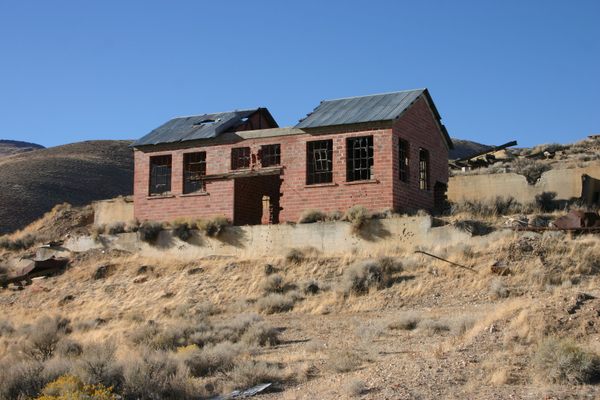About
Across the late 19th and early 20th centuries, a great many towns were established throughout the American West. The draw was mining, and, of course, the riches to be won as a result of successful operations. Plenty of Arizona towns that are today well-populated—from Bisbee to Globe to Wickenburg—started out as risky ventures predicated on the optimism of prospectors. Many other towns, however, proved economically inviable and were summarily abandoned, leaving a peppering of “ghost towns'' across the vast, dry desert—ghost towns like Swansea, Arizona.
This once-bustling mining town is today both entirely dilapidated and—being under the care of the Bureau of Land Management (BLM)—entirely visitable. With an interpretive trail and posted signage throughout the abandoned town, those looking to get a glimpse of old Swansea can do so by driving 25-miles through the Eastern Sonoran plains. There are dozens of adobe structures that once served as housing for hard-working miners, an old railroad depot, two cemeteries, and several mine shafts. Its location (far enough away to prevent vandalism, close enough to be visited) and dedicated preservation under BLM makes it one of the best preserved ghost towns in the state.
Prospectors first saw promise here in the 1860s, yet mining facilities didn’t make their way west until the turn of the century. And while the town itself wasn’t formally established until 1909, it allegedly already boasted an electric light company, two cemeteries, a saloon, theater, restaurant, barber shop, and a population of about 500. A 350-ton furnace, a half-mile water pipeline from the Bill Williams River, and five operating mine shafts kept the resources flowing and the town afloat.
For unclear reasons (one source attributes over-promotion by a founding townsman of Welsh origin, who also supposedly named Swansea after his hometown), financial problems arose in 1911, such that the mines shuttered and many townsfolk left. While the American Smelting and Refining Company bought the mines in 1914 and kept the town on life support, the subsequent Great Depression was the nail in the coffin. Despite a complete absence of economic opportunity, residents lingered here until 1943.
Though the town is a husk of its former self, there’s nothing stopping you from being a Swansea resident for a night: With five designated camping sites maintained by BLM throughout town, anyone able to make the drive is free to camp. Keep in mind that the road is unpaved and in many places uneven—an off-road capable vehicle with high clearance is recommended. Bring ample water and keep an eye out for rusty nails.
Related Tags
Community Contributors
Added By
Published
January 2, 2023
Sources
- https://pubs.usgs.gov/of/2014/1141/pdf/ofr2014-1141_front.pdf
- https://www.visitarizona.com/like-a-local/5-arizona-ghost-towns-you-may-have-never-heard-of/
- https://hikearizona.com/decoder.php?ZTN=16315
- https://www.onlyinyourstate.com/arizona/az-abandoned-town-swansea/
- https://www.blm.gov/visit/swansea-historic-ghost-town-0





































